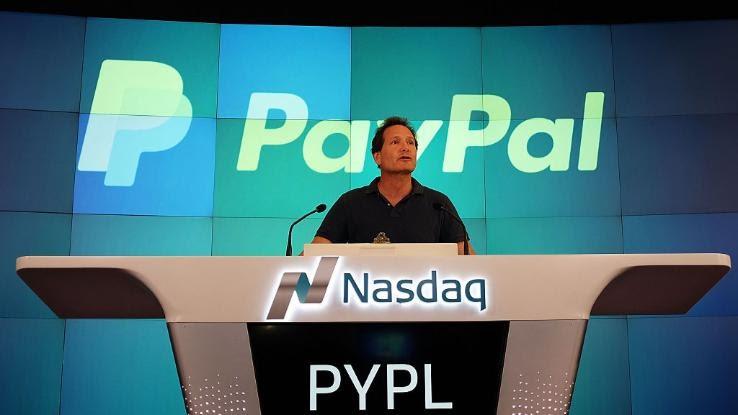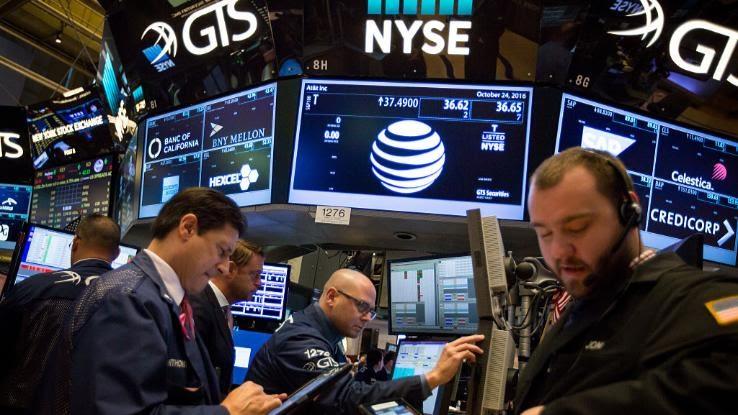Avoid These Investing Pitfalls When Buying the Highest-Dividend Stocks

When it comes to the stock market, stocks with the highest dividend yields are incredibly popular among many investors thanks to their potential for paying out high returns. Warren Buffett is notorious for his love of high-dividend-yield stocks and has successfully amassed a great deal of wealth by creating a strategy that involves long-term investments in several of this type of stocks.
But what about the average investor? While there can be advantages to investing in stocks that pay out high dividends, there’s also a number of misconceptions associated with this form of investing. Before you start researching which stocks to buy, it’s valuable to delve into what high-dividend stocks are and what you need to know beforehand to decide if they’re right for you.
What Are High-Dividend-Yield Stocks?
Before getting into the pros and cons of high-dividend stocks, it’s important to understand exactly what they are. Dividends are essentially percentages of earnings that companies distribute among their shareholders in order to “share the wealth,” so to speak.

There are several reasons why some companies choose to pay out dividends. Some of the primary considerations are:
- Dividends can be an effective financial incentive to attract future investors and retain those who already own stakes in the company.
- Because not all companies can afford to pay out dividends, the ones that can tend to hope that their dividends will serve as proof that they’re doing well.
- Some investors look to high dividend payments as a sort of safety net during times of market volatility.
Not all publicly traded companies pay out dividends to shareholders of their stocks, but those that do typically offer them on monthly, quarterly or annual bases. With that in mind, a high-dividend-yield stock is a stock that rewards its shareholders with a larger, more respectable percentage of profits — on top of any gains the shareholders may earn if the price of the stock itself rises. Typically, for a stock’s dividends to be considered high yield, the dividend payments must be higher than the average for the company’s industry; they’re often above 4%.
High-dividend-yield stocks are admittedly alluring. Not only do you make money as the price of your shares increases, but you also get a portion of the company’s profits if it performs well. But as an individual investor, there are other things you need to keep in mind when investing in these types of stocks.
Are High-Dividend Stocks Always a Good Safety Net?
One common misconception among many investors is that if a company can afford to pay high dividends, then that’s a good indicator of the company’s financial stability. Unfortunately, that’s not necessarily true. When most investors buy high-dividend-yield stocks, they expect to profit from both the dividends and a rise in the stocks’ prices over time.

But those two factors don’t always go hand in hand. In some cases, a high dividend yield can actually serve as a major distraction from a stock that’s clearly in trouble, especially if it’s an inexperienced investor’s sole consideration.
Take, for example, a real estate investment trust called Macerich (MAC) that invests heavily in shopping centers. In March of 2021, MAC shares offered a 4.4% quarterly dividend, which is relatively solid as far as dividends go. The more important consideration for a potential investor, however, should be the fact MAC’s share value has suffered a -82.82% decline over the past five years.
So while five-year investors may have enjoyed earning a $0.15 dividend per share each quarter, the worth of each of their shares also plunged from $89 in July of 2016 to $13 in March of 2021. To put it plainly, anyone who has held onto this stock for the long haul has lost much more money than they’ve gained in dividends — so it’s essential to consider a stock’s long-term performance trends, not just its dividends.
Share Volume Considerations
While investing tycoons like Warren Buffett may have solid reasons for buying and holding high-dividend-yield stocks, it’s worth keeping in mind that share volume plays a large part in their strategy. This is particularly true if a company’s dividends are among your major reasons for investing in it.

For example, imagine you own shares in Bank of America (BAC). In March of 2021, the company paid out a dividend yield of right around 2% per share. With shares at $36.31, you’d have gotten roughly $0.72 per share for each dividend you owned on the payment date. Now, if you’re Warren Buffett’s Berkshire Hathaway and own over a billion shares, you stand to make a nice chunk of change from dividends alone, regardless of whether the stock’s price has risen much. If you’re a more modest investor, however, it’s not going to be quite so simple.
Assuming that Bank of America will be able to offer similar dividends next year, you’d have to buy and hold roughly 140 shares in 2021 to make $100 worth of dividend profits. As of early 2021, that’d cost you a little over $5,000.
If dividends alone were your only consideration, this type of buy wouldn’t necessarily be worth it. In order to find out if this was a sound investment, you’d need to do a little more homework on BAC’s past returns. You’d discover that Bank of America has actually enjoyed a relatively strong run over the past five years, as its shares have risen 170%. Altogether, BAC shareholders average an annual return of around 23.95%.
This situation highlights an important principle: that investing in high-dividend stocks isn’t always profitable unless you purchase a higher quantity of stocks. But the next important question becomes whether there are other stocks that could make you more money in the same time frame.
Non-Dividend Doesn’t Always Mean Non-Growth
In order to find out whether Bank of America has traditionally been a strong long-term investment, it’s necessary to go back in time a bit. If you’d invested $5,000 in BAC stocks in 2016 when the average price per share was $13.79, you could’ve bought around 362 shares.

Since then, Bank of America’s stock price has enjoyed a growth of +169.89%. That means that, without even taking dividends into consideration, your shares alone would be worth $13,133.36 today. Add in the roughly $955 you would’ve made in dividends over the course of five years, and you’d come out with around $14,000 in 2021 — not bad for an initial $5,000 investment.
That said, let’s compare Bank of America’s performance with PayPal, a strong growth stock that doesn’t pay dividends. If you’d invested the same $5,000 in PayPal in March of 2016 at $39.49 per share, you’d have been able to buy about 128 shares. Considering that PayPal has enjoyed a five-year growth of 527.97%, your shares would now be worth $31,169.28, even without dividends.
The Bottom Line
The above example goes to show that dividends aren’t everything. When picking a stock, be sure to look for more than just a high dividend yield. Research things like:

- Past growth patterns: Has the company’s stock price continued to rise over the past year, three years or five years? Does it tend to be volatile, with large surges and plunges, or is it stable? If it appears stable, does it look a little too stable with no room for growth?
- The company’s earnings growth: Does the company you’re considering investing in have a solid track record for growing its assets over time?
- Innovation: Does the company have a reputation for developing new and innovative products?
- Industry: What direction are stock prices currently heading in the company’s industry at large? Is the company a leader in its industry?
Above all, do your homework and look at the big picture. While some high-dividend-yield stocks are great investments, not all of them are likely to be your best bets. Ideally, you only want to invest in high-dividend stocks if they also come with the strong possibility of gains in the stock price, too.





